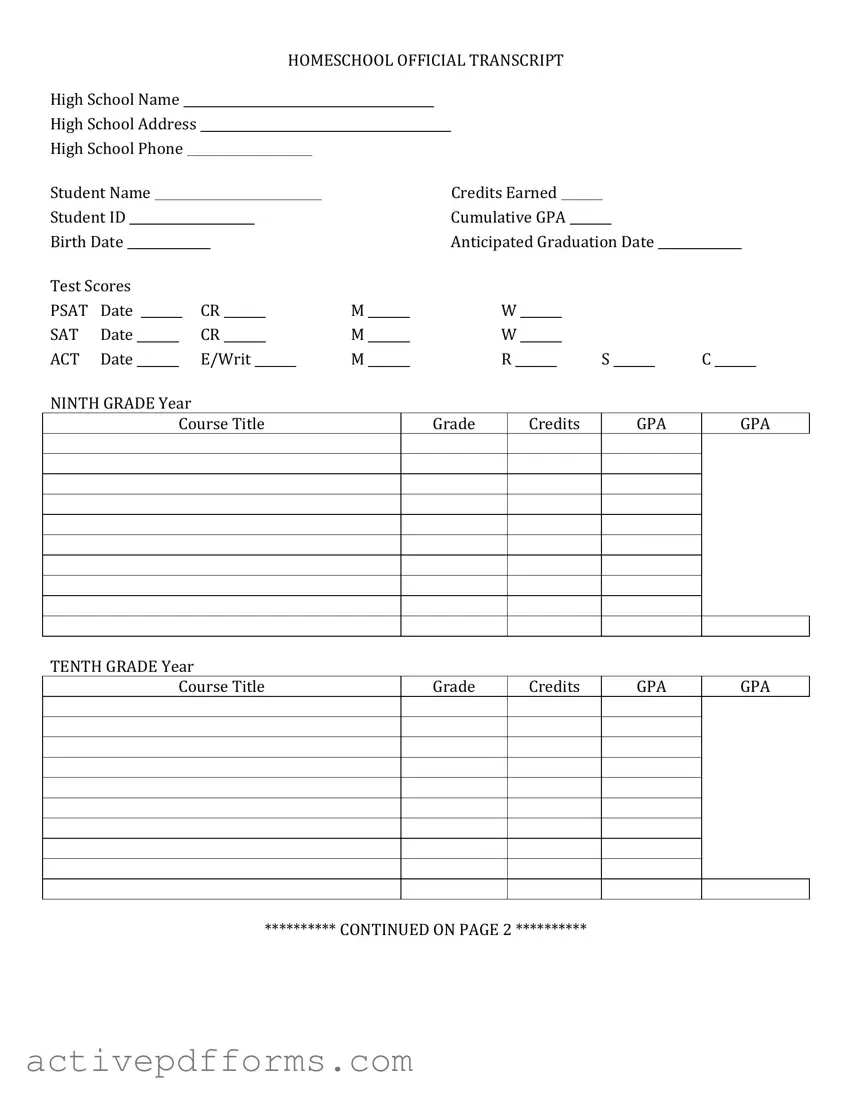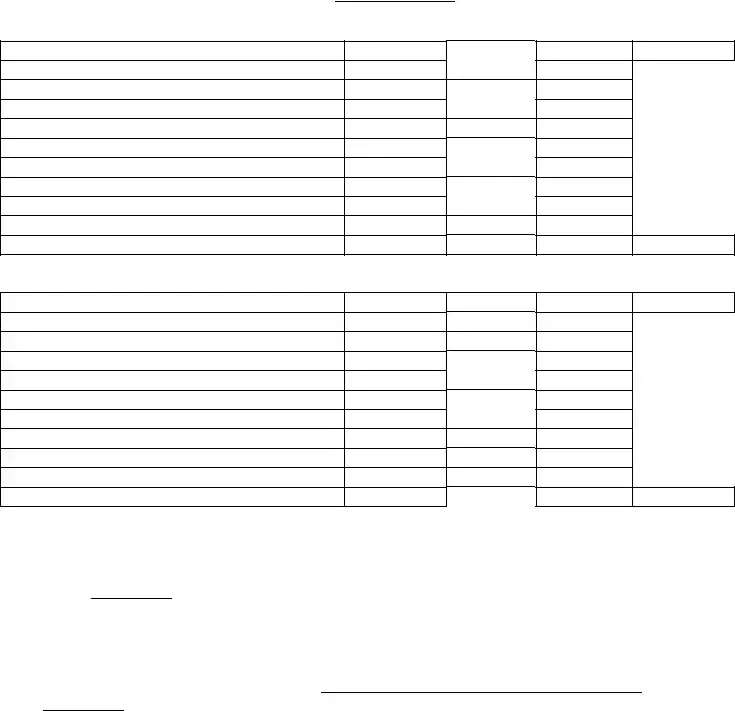Free High School Transcript PDF Template
A High School Transcript form is a comprehensive record that details a student's academic achievements throughout high school. This document includes courses taken, grades earned, and often the student's grade point average (GPA). It serves as a key component in college and job applications, highlighting a student's academic performance.
Edit High School Transcript Now


